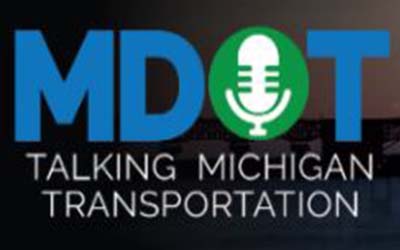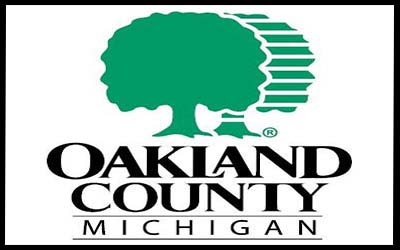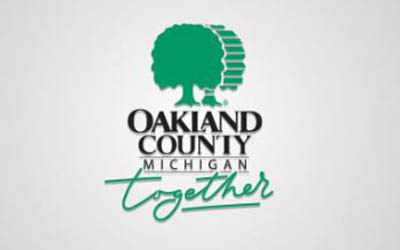
What the Interstate Highway System has meant for the U.S.
|

|

Pontiac, Michigan – Oakland County, Mich. has retained its Aaa bond rating with a stable outlook amid the fiscal and operational challenges of the COVID-19 pandemic, County Executive Dave Coulter announced today. Moody’s Investors Service awarded its highest credit score to the county for two Water Resources Commissioner (WRC) refunding bonds which will save ratepayers an estimated $5.2 million with lower interest rates over the life of the bonds.
Moody’s cited Oakland County’s effective response to the virus, budgetary excellence, and the Coulter administration’s strategic vision for the future as the rationale for reaffirming the county’s bond rating.
“The county has maintained its financial strength throughout the pandemic and it has benefitted from the receipt of significant federal stimulus, which it has and will leverage to support small businesses, community health, and social services,” Moody’s said in its press release.
“Throughout the pandemic, my administration and the other elected officials have leaned into the pandemic response to ensure we are supporting the critical needs of our residents, businesses, schools, communities, and non-profit organizations so the county will emerge strong from COVID-19,” Coulter said. “This Aaa bond rating affirms that Oakland County is headed in the right direction.”
The two refunding bonds are the City of Pontiac Wastewater Treatment Facility Drainage District Drain Refunding Bonds, Series 2021 ($39.11 million) and Oakland County Farmington Hills Water Supply System Refunding Bonds, Series 2021A ($4.21 million). The bond sale will be on April 28.
“The longstanding Aaa bond rating that Oakland County has earned allows for important water and sewer projects to be financed at the best rates,” Water Resource’s Commissioner Jim Nash said. “It provides cost-effective benefits that will have a positive impact on our ratepayers and lasting economic, environmental and social equity rewards that will resonate for decades to come.”
Oakland County has consistently maintained a Aaa bond rating since 1998 because of the shared commitment to long-term financial planning among the leaders in all branches of county government.
“Oakland County continues to demonstrate that we can make investments in our communities, improve people’s lives and manage our finances responsibly,” Board of Commissioners Chairman David T. Woodward said. “This positive rating affirms we are on the right track.”

Pontiac, Michigan – Oakland County’s Oakland Together Restaurant Relief Grant has delivered 269 igloos and greenhouses, 1,022 outdoor propane heaters, 6,088 propane exchanges (20 lbs.), 868 electrostatic sprayers, and 1,683 gallons of electrostatic disinfectant to restaurants in 49 cities, villages, and townships.
“The current surge in COVID-19 cases indicates that we all need to continue to work together to take measures to slow the spread of the virus in the community,” Oakland County Executive Dave Coulter. “This equipment enables restaurants to continue to operate while ensuring a safe dining experience for customers.”
In December 2020, Oakland County allocated $3 million from the county’s general fund, to help bars and restaurants facing challenges from the State of Michigan’s three-week “pause” ordered Nov. 15. The health order limited bars and restaurants to providing outside dining, carryout and delivery service only.
“The Restaurant Relief Grant has allowed us to acquire items critical to ensuring the safety of both customers and staff,” said Randy Bahoom of Fuddruckers, Southfield, Mich. “We’ve been able to obtain new point-of-sale technology for touchless credit card transactions, outdoor heaters to keep our customers comfortable while enjoying their meal on our patio, a sanitizing gun sprayer and take-out supplies, including paper products and to-go boxes.”
Through this two-phased program, Oakland County has awarded about $2.84 million in needed products and funds to partnering cities, villages, and townships. Local communities are using these products and funds to support dine-in restaurants, bars and cafes.
“We greatly appreciate Oakland County’s support of local restaurants, bars and cafes through the Restaurant Relief Program,” said Glenn Lapin, economic development specialist, city of Troy. “Our food and beverage establishments have experienced very difficult challenges during this past year. Assistance through this program has enabled these businesses to enhance outdoor dining options, make critical technology updates and provide for much needed PPE.
Approximately 20 Troy restaurants, bars and cafes are expected to participate in phase one and two of the program. These businesses provide employment for more than 500 people. I know that our restaurants, bars and cafes are very appreciative for the support.”
“The Restaurant Relief program allowed us to directly support our businesses that have been struggling because of the pandemic. We appreciate the partnership with Oakland County to help local small businesses,” said John Martin, city manager, city of Sylvan Lake.
Restaurant, bar and café owners can contact Oakland County at restaurantrelief@oakgov.com to find out what cities, villages, and townships have received awards. The program ends on June 30, 2021.

FOR IMMEDIATE RELEASE: April 16, 2021
CONTACT: Bob Wheaton, 517-241-2112
LANSING, Mich. – Today, the Michigan Department of Health and Human Services (MDHHS) extended its Gatherings and Mask epidemic order. The Order – which preserves the strongest public health order in the Midwest – is designed to balance day-to-day activities while controlling the spread of COVID-19 and saving Michiganders’ lives. It includes expansion of mask requirements to children ages 2 to 4 to further protect the state’s residents.
Although progress has been made, it is crucial that Michiganders continue to mask up and socially distance as the state takes steps to get back to normal.
Expanding the mask rule to children ages 2 to 4 requires a good faith effort to ensure that these children wear masks while in gatherings at childcare facilities or camps. It takes effect April 26, 2021. This addresses the increase in cases among younger Michiganders and follows recommendations from the American Academy of Pediatrics and Centers for Disease Control and Prevention guidance.
“Michigan continues to implement smart health policies and mitigation measures to fight the spread of COVID-19,” said Elizabeth Hertel, MDHHS director. “This includes the requirement to wear a mask while in public and at gatherings, limits on indoor residential social gatherings larger than 15 people with no more than three households, and expanded testing requirements for youth sports. Additionally, the most important thing people can do right now is to get the safe and effective COVID-19 vaccine to protect themselves and their families, and help us eliminate this virus once and for all.”
As of today, 29.5% of Michigan residents 16 and older had been fully vaccinated for COVID-19 and 44% had received at least a first dose.
“More than 5.5 million doses of the safe and effective COVID vaccines have been administered in Michigan, and we are well on our way to vaccinating at least 70% of Michiganders ages 16 and up,” said Dr. Joneigh Khaldun, chief medical executive and chief deputy for health at MDHHS. “However, I continue to be incredibly concerned about our state’s COVID-19 data. We are still very much fighting this pandemic and seeing concerning trends in new cases and hospitalizations. Michiganders need to be using every tool in our toolbox right now to get these cases and hospitalizations down. Just because something is open and legal does not mean you should be doing it. We all must continue doing what works to slow the spread of the disease by wearing masks, washing our hands, avoiding crowds and indoor gatherings, and making plans to get the safe and effective COVID-19 vaccine as soon as possible.”
MDHHS had been closely monitoring three metrics for stabilization or declines over the past several weeks. Michigan’s metrics have been increasing for the past few weeks, although the rate of increase is declining. The presence of more infectious variants, such as the B 1.1.7 variant, threatens progress in control of the epidemic and MDHHS will be monitoring data closely. In recent days:
“Nurses are exhausted. Many hospitals are close to 100% capacity. RNs around the state are being put in the impossible situation of having to decide which patient to attend to. Nurses are working up to 18 hours at a time, often without breaks,” said Jamie Brown, president of the Michigan Nurses Association. “We are begging for everyone in the community to do their part. Stay home. Wear a mask. Get a vaccine when you are able. We are barely able to keep our heads above water. We are in crisis. We need our communities’ help.”
“We know that wearing a mask significantly reduces the spread of infection and should be part of the comprehensive strategy to reduce COVID-19-including for children age 2 and up,” said Michigan Chapter of the American Academy of Pediatrics (MIAAP) President Dr. Matthew Hornik. “Use of masks does not restrict oxygen in the lungs even in children, it is recommended to wear a mask with layers to filter droplets effectively.”
The order extension is through May 24. An infographic that highlights order requirements can be found on Michigan’s COVID-19 website.
Information around this outbreak is changing rapidly. The latest information is available at Michigan.gov/Coronavirus and CDC.gov/Coronavirus. To learn more about the COVID-19 vaccine, visit Michigan.gov/COVIDVaccine.
 |
||||
– DNR News – |
||||
|